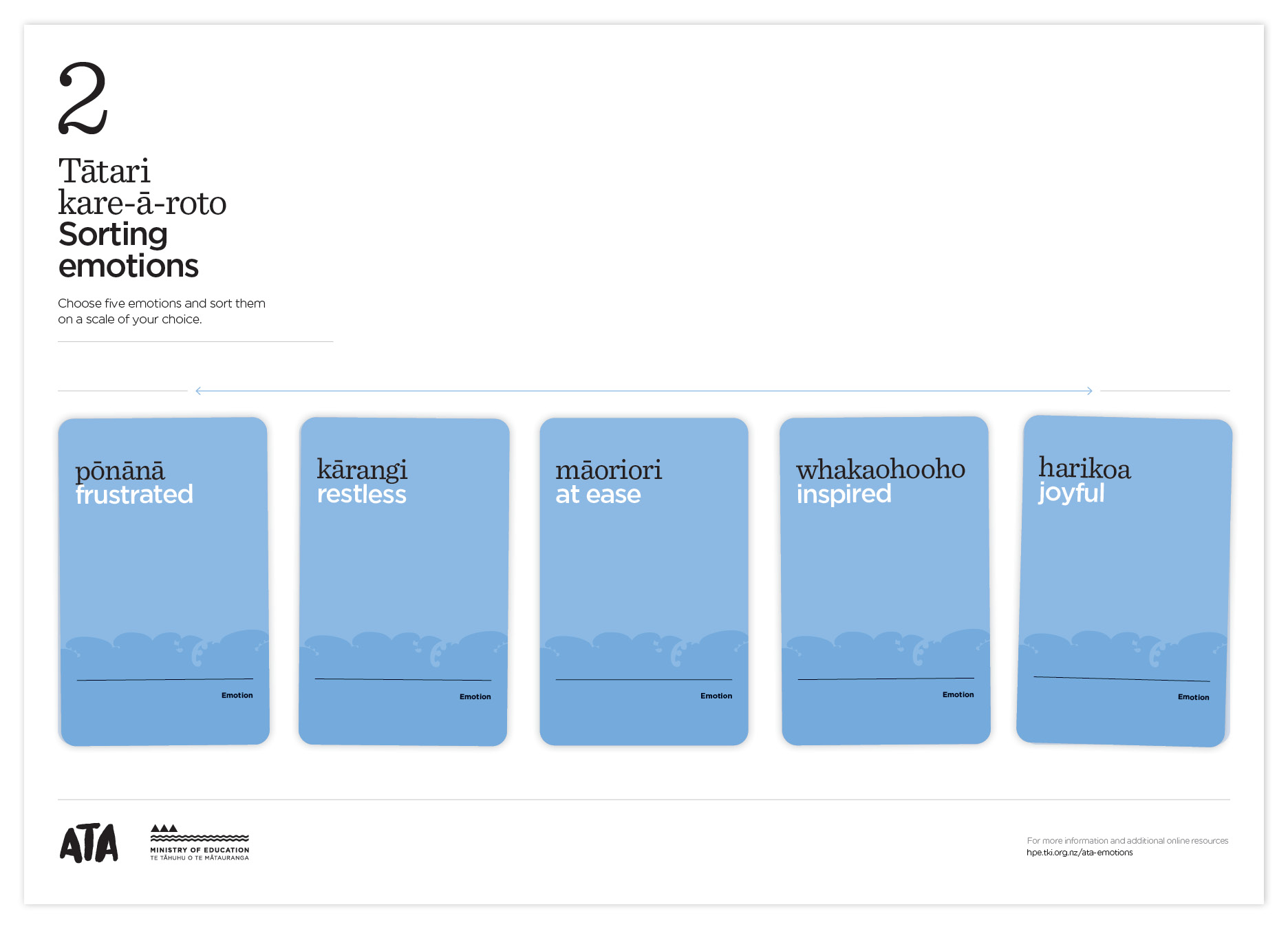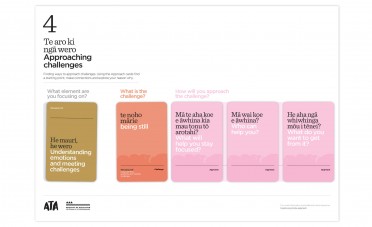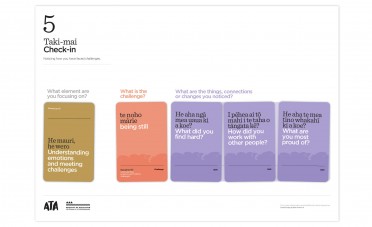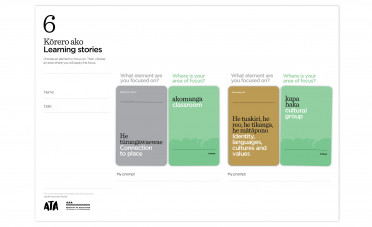Sorting emotions Tātari kare-ā-roto
Explore emotions and discuss their meaning. Choose Emotion cards and sort them on a scale of your choice, e.g. unpleasant to pleasant, high to low energy, or high to low impact on your lifeforce, focus or energy levels.
Ata — Resource collection
This activity is part of the Ata resource collection.
Essential info
- Timeframe:
- 1-2 lessons
- Years:
- 4–10
- Format:
- Individual or groups
Learners will
- Have a deeper understanding of emotions, feelings and moods.
- Build their vocabulary.
- Explore and discuss different perspectives on emotions.
- Develop empathy and insight into their own and others’ emotions.
- Develop confidence in expressing their emotions.
Ways to use the resource
- Change the scale you are sorting by and discuss what has changed and why.
- Take a large set of (curated) Emotion cards and work as a group to place them on a scale of your choice.
- Use the base activity, or try the Game of emotions gameplay.

Instructions
What you will need
Emotion cards.
Sorting emotions activity sheet: One per person/group (not needed for game).
Set up
1. Prepare cards
Add or remove Emotion cards to suit the needs, interests, age or developmental stage of learners.
2. Prepare activity sheets
Print or photocopy one Sorting emotions activity sheet for each person or group.
Activity
1. Choose emotions
Each learner receives five Emotion cards. Either spread the cards out on the table face-up and let the learner(s) select, or shuffle the cards and deal five to each.
2. Sort emotions
Each person or group sorts their Emotion cards on an agreed scale, e.g. unpleasant to pleasant, high to low energy, or high to low impact on your lifeforce, focus or energy levels.
Game variant
1. Set up
- Pick someone to be the judge for the first round
- Deal three cards to each player(including the judge) and place the remaining cards face-downin a pile
- Agree a scale on which to sort the cards, e.g. unpleasant to pleasant
- The players sort their three starting cards based on the agreed scale.
2. To play
- The judge reveals a card from the top of the pile
- Moving clockwise, each other player indicates where the new card would fit within their existing set, and explains why
- The judge decides which player provided the best explanation and gives that card to the player to add to their set
- The player to the left of the judge becomes the judge forthe next round.
3. To win
Play continues until someone gets six cards in their set.
Discuss & customise
As you go, discuss why the cards (emotions) sit where they do.
Downloads
-
Ata Blank Cards
Blank Ata cards in an A3-size printable format. Use for capturing ideas and customising the resource.
Pdf, 234 KB
-
Ata Emotion cards jpgs
The Ata Emotions cards in jpg format.
2 MB
-
Ata Emotion cards printable
The Ata Emotions cards on print-friendly A3-size pages. Files are in pdf format.
348 KB
-
Ata Sorting emotions activity sheet
The A3-size Ata Sorting emotions activity sheet in pdf format.
Pdf, 57 KB
-
Ata Sorting emotions teacher support material
Teacher support material for the Ata Sorting emotions activity.
Pdf, 168 KB
Next steps
- Discuss emotions as part of the Developing strategies activity.
- Emotion cards can be linked to other existing social and emotional resources and frameworks, e.g. Zones of Regulation™.




